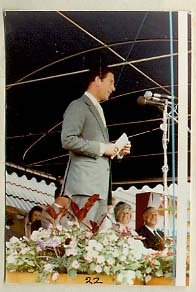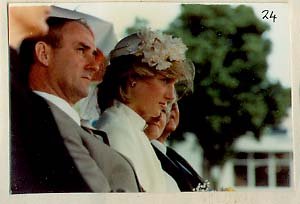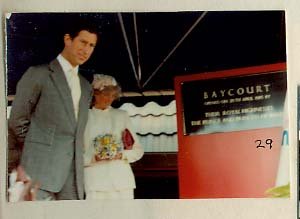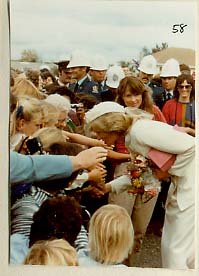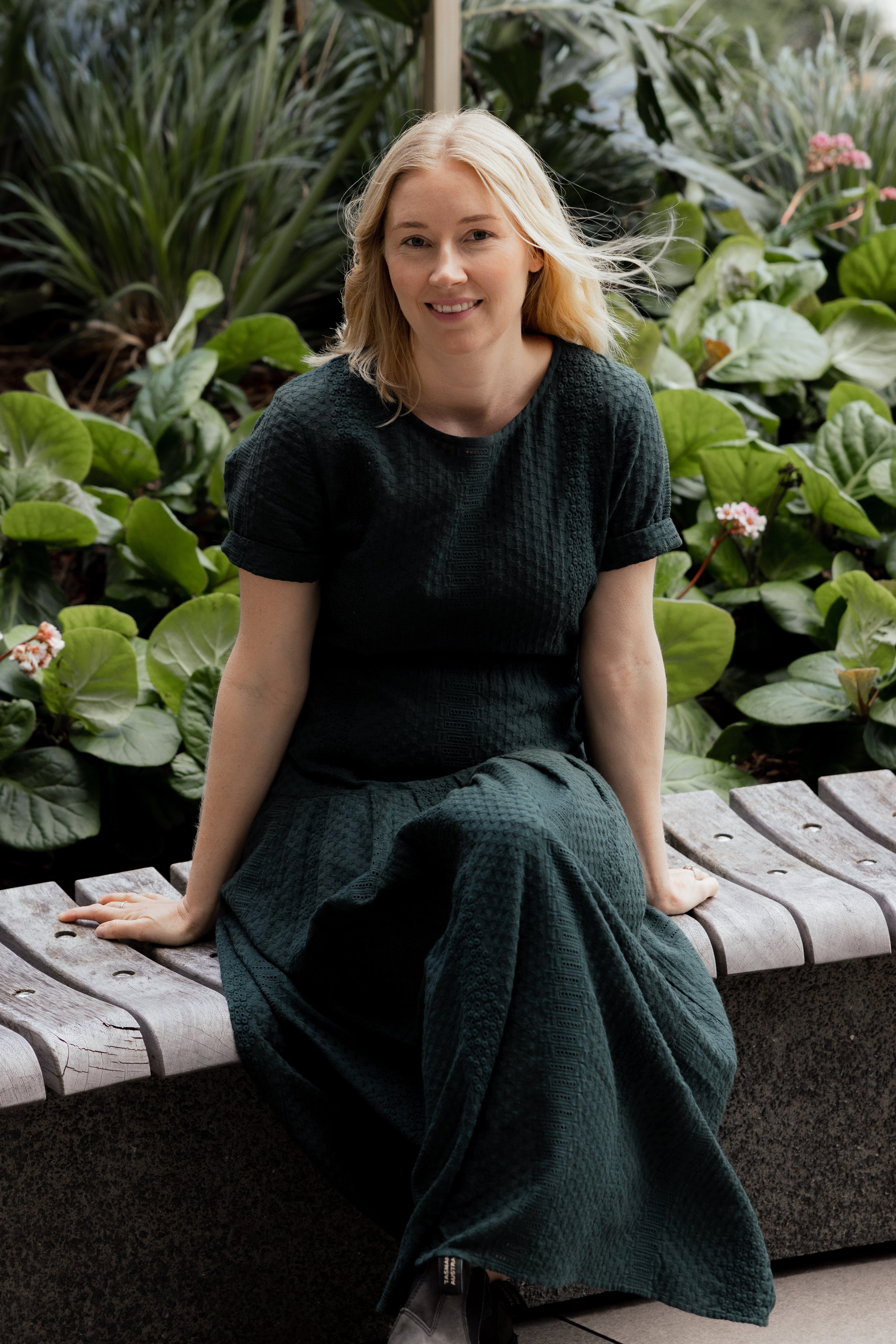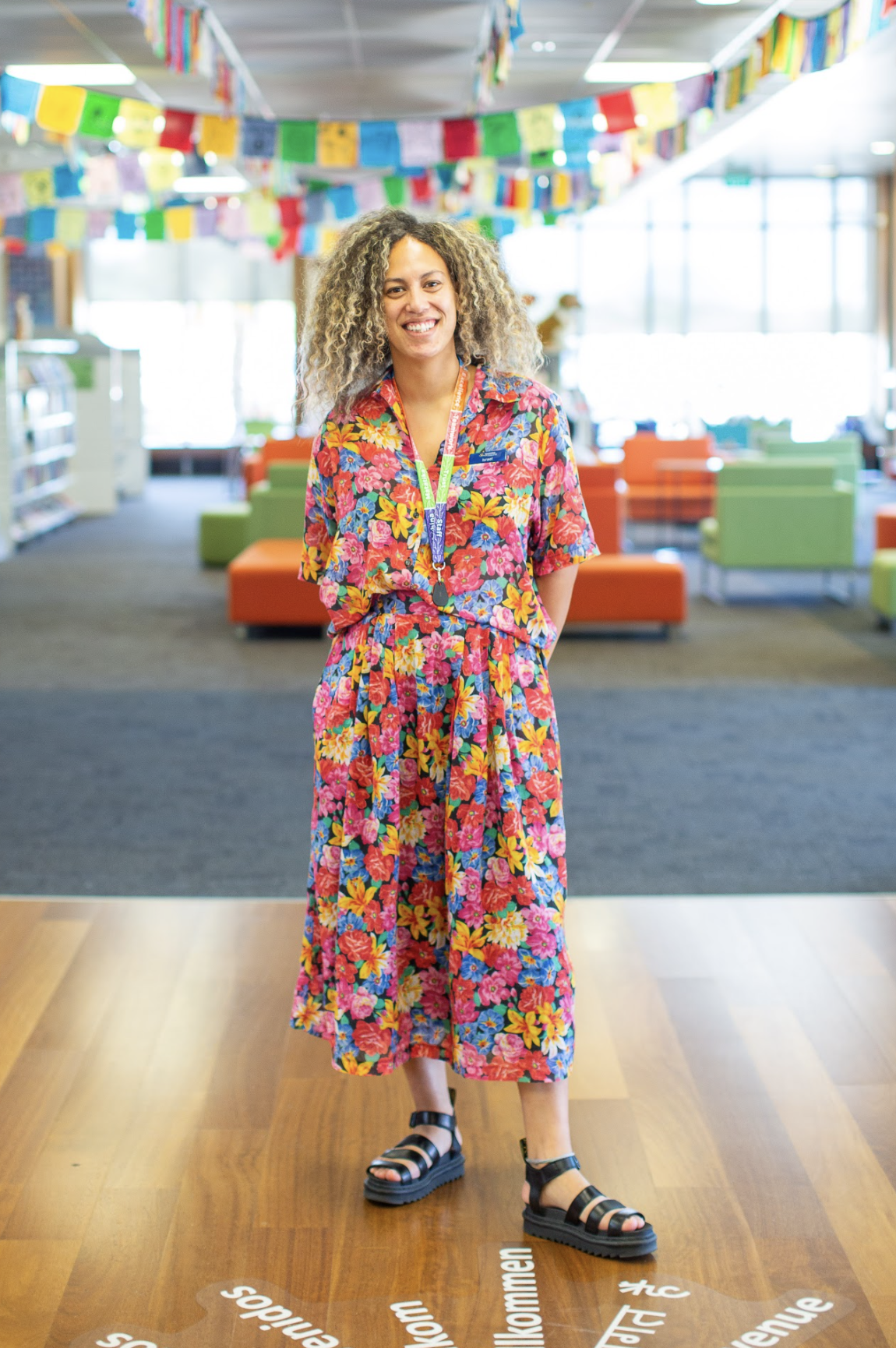Behind the curtain
This April, take a peek backstage at Baycourt’s colourful history – and celebrate its ruby anniversary with a diverse roster of performances, exhibitions and community engagement.
This April, take a peek backstage at Baycourt’s colourful history – and celebrate its ruby anniversary with a diverse roster of performances, exhibitions and community engagement.
Words Monique Balvert-O’Connor
If a venue like Baycourt is marking a milestone, then it follows that creative celebrations can be expected.
And such is the case, with all eyes on the stage between April 21-29, when Baycourt’s 40th anniversary
celebrations will be rolled out. It will be a time to reflect upon, and celebrate, the many magic moments delivered in one building over four decades, says Baycourt manager Reena Snook.
In its time Baycourt has served its community well – providing the venue for hundreds of school musicals, primary school music festivals, all sorts of dance competitions, dramatic performances, Tauranga Art Festival and Jazz Festival events, and so many more. It’s provided a stage for comedians like Ben Elton, for example, and national dance companies like Atamira, for Kiri Te Kanawa, and repeatedly for The Royal NZ Ballet and NZ Symphony Orchestra.
Many have used the Baycourt stage over the years as the springboard to stardom, with these including actor Tim Balme, and prima ballerina Katherine Grange. Technicians involved backstage have gone on to work in some of the world’s biggest venues.
This Tauranga premier performing arts venue’s impressive history actually has a royal connection too. On April 26, 1983, Baycourt was opened by the Prince and Princess of Wales – the late Princess Diana and the then-Prince Charles.
Baycourt’s Technical and Operation manager Dale Henderson - who has a lengthy association with Baycourt - tells how the Royals were restricted to entering solely the then-called Exhibition Space as Addison Theatre, with its many curtains and entry points, offered too great a security risk.
Reena says the 40th celebrations are a time to remember such momentous events and to acknowledge her predecessors, such as the late Bob Addison. The city identity started his time as long-serving manager of Baycourt in 1988. Dale recalls Bob’s focus on getting school and community groups in using the venue.
Baycourt’s history tracks many changes in performing arts in general, he says, back to the days pre-radio microphones, LED lighting, and e-ticketing. And he recalls the days before Baycourt’s flytower was constructed. One of the biggest changes Baycourt has been through, he believes, is in what was called The Exhibition Space, now X Space.
“It was used as a display/exhibition area but is now much more around performing arts and enables emerging-type performances to go ahead there.”
Baycourt can boast many wonderful stories of community involvement, and Dale offers up one dating right back to when it was being built.
“With acoustics in mind, material was needed for the back wall. So, local spinners and weavers managed to create 20 woollen wall hangings. They still hang today on The Addison Theatre’s back wall.”
Reena and Dale see the 40th anniversary celebrations as a launching pad for the next stage of Baycourt’s journey too. In the not-too-distant future, Baycourt’s interior will be refurbished and its façade upgraded, as part of the development of the new civic arts and culture precinct, Te Manawataki o Te Papa. ”
Let’s celebrate
There’s much to remember, much to celebrate, and Reena assures the public can expect a diverse 40th anniversary programme that will involve:
A gala concert (7pm on April 21). Think royal variety show. Taking the stage will be groups like Tauranga Musical Theatre, Opus Orchestra, and local dance groups – all of which have performed on the Baycourt stage over the years.
A curated art exhibition in the X Space (from April 21-29) – free entry. Organised in collaboration with The Incubator, X-bition will be a creative presentation of historical and current images from Baycourt’s collections.
An online digital component which has involved taking archival images and digitalising them. A website, with the images, will be launched on April 21.
A community engagement programme named He Toi Kupu is being produced by Tauranga-born creative Jason Te Mete (Ngāti Ranginui, Ngāi Te Rangi) and his organisations Tuatara Collective and Ahipoutu Collective. This event will involve extracted stories dramatically interpreted.
A whānau day on April 29 to end celebrations. The community will be welcomed for guided tours of Baycourt during this free, family event. Face painters, balloon sculptures and food will all be part of the fun atmosphere.
For the love of arts
The new artistic director of Tauranga’s flagship Arts Festival brings passion and experience to the event.
The new artistic director of Tauranga’s flagship Arts Festival
brings passion and experience to the event.
Words Monique Balvert-O’Connor Photos Jeremy Hooper
Gabrielle Vincent thinks she may have shed a tear or two upon hearing she’d got the job of Tauranga Arts Festival artistic director.
“I love programming live performance and really wanted to get into the festival world, so being given this opportunity was just so very exciting,” is how she explains her happy tears.
Renowned as one of the most exciting art producers in the country, Gabrielle has come to the Tauranga Art Festival job after six years leading Auckland’s Basement Theatre where she commissioned and produced some of New Zealand’s boldest and bravest new talents.
The new position she was so thrilled about came her way at the tail end of 2020. But because the COVID-19 pandemic put paid to the planned 2021 Tauranga Art Festival, and caused a pushing out of this year’s Escape festival (from June to October), there’s a sense among Tauranga’s art community that Gabrielle has yet to be properly introduced. The October 12 to 16 Escape – little festival with big ideas – event is about to change that.
“This will be the first festival I actually get to deliver. We did a lot of work and came up with an exciting programme for the 2021 festival – it was heartbreaking having to call that off. Now it’s really wonderful to be able to deliver something.”
While she has years of experience programming, Escape will offer Gabrielle (34) her first opportunity to programme a writers’ festival. And what an exciting journey it has already been, says this woman with great ideas and vision.
There’s much on offer to thrill, and Gabrielle selects News, News, News as an example – a television news show, made by children for adults, recorded in front of a studio audience and broadcast live from Baycourt. Children from Mount Maunganui primary will be involved, guided by Andy Field and Beckie Darlington – Gabrielle’s enticed both over from the United Kingdom. Andy and Beckie came up with the concept, and have worked with children across the world who have performed it.
“It’s going to be a really fun show. It’s incredibly informative and, of course, very funny and sweet and enlightening.”
Gabrielle is delighted the timing of Escape falls within the school holidays, and as a result the line-up includes many family-friend events and children’s work.
“I am passionate about art bringing family together and sharing moments that become memorable experiences,” she says.
Gabrielle’s daughter (she and husband Simon have a three-year-old named Edie) will grow up with a plethora of such memories, for sure. Before long she’ll be tagging along with her mother who loves to soak up theatre, dance and music performances. Perhaps, like her mother, Edie will be a “drama geek” at school, too.
Acting, singing – and a seventh form curriculum full of art subjects – filled schoolgirl Gabrielle’s creative soul with joy. As a school leaver, who felt “incredibly passionate” about theatre and live performance, Auckland Unitec beckoned with its opportunity to major in theatre directing.
During her third year of study, Gabrielle was seconded to Auckland Theatre Company, where opportunities included getting to assistant-direct a show. Then, when a stage manager position came up, Gabrielle – who thoroughly enjoyed being backstage – was the “go to”. Gabrielle spent the next six years as a freelance stage manager, working mainly for Auckland Theatre Company.
A keenness to get into the producing side of the business coincided with a six-month pilot producers’ programme on offer at Auckland’s Basement Theatre – the home of independent theatre.
“I got that, which was exciting. I saw many emerging artists come through and then head off and thrive
doing phenomenal things.
“I then realised I actually liked programming more than producing and I managed to get a programme director
job there for about five years.”
It’s been a career full of wonderful opportunities and adding the part-time Tauranga Arts Festival director job to the curriculum vitae is another highlight. Preparation for the next festival, in 2023, with its range of art forms are well underway. But first, Escape, with its writers, speakers, live theatre and more.
“Programming a writer’s festival has been a really exciting journey. It occurred to me that what’s different about this compared to other live performances is that none of the conversations are rehearsed. They are conjured up by people, places, ideas and we are seeing something magical unfold at the time. Conversations are unique and cannot be replicated,” she says.
When UNO chats to Gabrielle she’s not long off preparing to head to Tauranga (Auckland is home base) for a month, in readiness for, and for, Escape. She can’t wait!
Into the Incubator
This creative hub has built a colourful reputation over nine amazing years
This creative hub has built a colourful reputation over nine amazing years
Words Sue Hoffart Photos supplied
Pilots love the rainbow-hued roadway that loudly, proudly adorns the entrance to The Incubator’s headquarters inside Tauranga’s Historic Village.
From the air, the artwork has become a well-known and cheery navigation beacon for passing planes. On the ground, it is yet another practical example of the “edgy, alternative, multi-genre art space” that Incubator director Simone Anderson envisaged a decade ago.
When the Tauranga artist set out to establish a creative hub for budding fellow practitioners, she and her
small team inhabited a converted barn divided into six studios. These days, the barn – dubbed the mother ship – is headquarters to an arts organisation that boasts 24 resident artists who now inhabit 15 buildings within The Village. Countless initiatives, events and artists have flourished along the way.
Every year, thousands of people visit to celebrate eccentricity at the Fringe Festival or attend Incubator-led workshops, to hear live music or buy the ceramics and clothing, jewellery and other items created by artists working on site.
“We’re expanding and growing beyond our wildest expectations and we’re changing the perception of
what our city is,” Simone says. “Tauranga has had a reputation as a cultural wasteland. We knew that wasn’t the case but now all these alternative, quirky high-functioning artists are really visible, in one place,
in The Village.
“And we have this whole ecosystem of working artists who now have community support, sharing resources and marketing and retail space.”
The Incubator is living up to its name in a multitude of ways. As well as incubating talent and ideas, it is inspiring visitors to appreciate new or different art forms.
“We want people to say yay, I went to that exhibition or event and I didn’t even don’t know I was interested till I saw it. Far out, that was cool.
“And we want everyone to realise art is a real, professional trade, like an electrician or a plumber.”
The organisation is also propagating creativity beyond The Village gates.
Tauranga Art Gallery has featured work by many artists who found their feet through the Incubator, while the city centre and local area are more vibrant thanks to murals by Incubator graduate Sam Allen. The young painter found confidence and connections in The Village.
City women are wearing clothing by fashion designer Kerry Funnell, who launched her Nape label and boutique after sharing a satellite studio in The Village.
“Kerry’s work is stunning, and people can walk in and see her with her sewing machine and bolts of fabric, on the main street here.
“The Village has always been an open, inclusive asset for the city and that’s exactly what we aim to be. Everything we do is really grassroots, accessible, the cost barrier is low. It’s not elite or pretentious.”
The art deco Village Cinema has recently joined The Incubator stable, with its Hollywood-themed designs and "for the people, by the people" mantra. The cinema aims to cater to everyone from independent filmmakers to people living with dementia or a disability while embracing guests who are neurodiverse, new immigrants, on a low income, or from the LGBTQIA+ community. Audiences can expect to find vintage, arthouse or Pasifika film events as well as children’s holiday or private screenings and Bollywood film nights.
At the eastern end of The Village, a creative community campus is the newest addition. This development, in a repurposed Montessori school, encompasses a textile and sewing hub, a ceramic and pottery hub, large outdoor teaching spaces and a roomy classroom ideal for workshops and seminars.
“It’s one of our most exciting projects. It’s second in size to the city’s art gallery and it’s a game-changer for the city in terms of arts infrastructure.”
After Dark
Creative BOP’s urban festival is bringing light to dark times.
Creative BOP’s urban festival is bringing light to dark times.
Words Luke Schroder - images supplied
It’s easy to walk around Tauranga’s city streets without paying any close attention to the big blank walls of surrounding buildings. Concrete slabs and featureless facades line the streets, designed to be forgettable, non-intrusive enclosures for the businesses contained behind them. But for some clever minds these walls represent a far more exciting opportunity. These walls will soon become canvases for creativity as artists light up public spaces with an eclectic mix of colourful shapes, short films, abstract imagery, and innovative lighting technologies that will show the city in a new light.
This exciting initiative is being brought to Tauranga by Creative Bay of Plenty, with funding support from Creative New Zealand. Trustpower has come on board as the major corporate sponsor, alongside partners Downtown Tauranga, Tauranga City Council, Priority One, Veros, Te Tuhi Mareikura Trust and Toi Ohomai.
After Dark Urban Light Festival is an all-new art experience that will see a range of artworks transform Tauranga’s CBD into a gleaming playground full of exciting, illuminated installations. For 10 days in May a selection of luminous artworks will form a unique art trail across the central city through a mixture of video projection, freestanding sculptures, glowing alleyways, short films, and creative uses of vacant spaces. The festival is designed to be a self-guided journey spread across multiple sites within Tauranga’s CBD that encourages people to walk around the city discovering the various installations and the magic within.
It may not seem like a logical time to be running a new festival given the recent wave of event cancellations, postponements, and ongoing uncertainty, however with some clever thinking and careful planning After Dark is designed to be able to proceed regardless of traffic light settings or gathering restrictions. Because the festival isn’t fixed to a particular day, time, or single location, all those attending can be spread out from each other and stay socially distant whilst still enjoying all the festival has to offer.
“We’ve intentionally designed a covid-friendly format that allows people to participate from a distance and at their own leisure”, says Project Manager Luke Schroder. “People can view any artwork at any time on any evening during the 10 days of the festival and still have the same great experience.”
After Dark will be an opportunity for families, friends, and individuals of all ages to share in an exciting and fresh artistic experience described as a ‘tapestry of illuminated creativity’. After Dark explores themes of connectedness in our society, specifically connections to people, culture, and nature. These connections make up the themed ‘threads’ of After Dark and serve as inspiration for new works created for the festival.
Emily Woolerton is one local artist creating a new artwork specifically for After Dark. As the creative mind behind Mount Maunganui design studio ‘Calico’ and clothing label ‘The Know’, Emily is no stranger to creating fun designs and out-of-the-box visual ideas. For the launch of her first clothing line, Emily used video projection to transform Papamoa photography studio Suburbia into an exciting visual feast of giant slurping noodles, animated playing cards, floor-to-ceiling curtains made of poetry, and a brand-new fashion collection on display.
“Normal moments became jarring by placing them in the centre of attention. Someone eating noodles is an average, everyday occurrence – until that person is five metres wide and you can see every detail. It became an immersive experience, where people were both transfixed and horrified by the ordinary.”
With a mind for design and an eye for detail, Emily is looking forward to creating a new piece to be exhibited at After Dark later this year. Her artwork titled ‘Critical’ is a creative look at our need for human connection and examines how we are wired to thrive through relationships with one another instead of getting lost in our own insular worlds.
Emily is excited to see creativity fostered in the Bay of Plenty through projects such as After Dark and is looking forward to seeing the vibrancy it will bring to the city. “One of the beautiful things about art is how it brings people together, and it’s really exciting to see events like this build the culture and atmosphere in Tauranga.”
After Dark Urban Light Festival runs from Friday May 13 to Sunday May 22, 2022 in Tauranga CBD and is a free-entry event suitable for all ages.
Award-winning Israel Randell talks art, new challenges and the bigger picture
“If people ask me [to explain my work], I want to have a conversation. That’s really all art is, a conversation. Sometimes it’s real honest, like, ‘What the hell is that?’ or ‘Why do I hate this work so much?’” That’s the kind of things that artwork brings.”
Through multi-media, moving image and sound, award-winning Tauranga artist Israel Randell articulates the spiritual and unseen. Now, in her new role as curator at Whakatāne Museum & Arts, she wants to help amplify the voices of local talent.
WORDS Maria Hoyle PHOTOS Quinn O’Connell
The question ‘what is art?’ is a tricky one to answer. One person’s masterpiece may be another’s monstrosity, making it hard to reach a consensus. Yet for multi-disciplinary artist Israel Randell, it’s not complicated at all. Art, she says, is a conversation, and as a newly appointed exhibitions curator at Whakatāne Museum & Arts, it’s one she is very much looking forward to having with the local community.
Originally from Hamilton (Tainui, Ngāti Kahungunu) and of Cook Islands descent, the mum-of-one has her work cut out for her when she arrives at her post (the week after talking to UNO). She and the team will be busy preparing for the February exhibition of the winners of the Molly Morpeth Canaday Award: Painting & Drawing, presented by Arts Whakatāne and held at Te Kōputu a te Whanga a Toi – Whakatāne Library & Exhibition Centre. Although that will be Israel’s immediate focus, she talks excitedly about the bigger picture.
“I’m really interested in being embedded in the community, getting to know the artists, and finding out how I can help them to realise their ambitions and be that person who bridges the community and the gallery,” says the Toi Ohomai Bachelor of Creative Industries graduate. “I’m also excited to be learning from my colleagues. Going into any new role, it’s good to be listening.”
Listening will be crucial for her dialogue with local artists too. Some may not see the gallery space as relevant to them – for example, those who may be more focused on selling their work, or those from other disciplines such as dance, theatre or acting.
Is it fair to say that galleries are often seen as no-go zones for certain sections of the community? “Yes,” she says decisively. “A gallery space is definitely always viewed as a white space by people outside looking in.”
So breaking down the boundaries between practices is one way not only to showcase a wider variety of work, but also to change the perception of what and who a gallery is for, of reaching those who aren’t, for whatever reason, engaging with it. “It’s constructive to help different types of creatives,” says Israel. “I think it does start with having a structure that caters to every kind of practice, not just the 2D practice or sculptural practice.”
Israel’s no stranger to having a dialogue across disciplines and amplifying the voices of indigenous artists. She arrives in her new role fresh from a Mana Moana research residency with arts agency Circuit, where she looked at the experimental practices of Māori and Pasifika visual artists, writers, choreographers and musicians to produce a collection of interviews and online content.
Israel’s own work experiments with moving image, multi-media and sound – quite a departure from the large-scale paintings she did as an art student in Auckland. “I took a break, moved to Tauranga and started off again at Toi Ohomai. But I didn’t want my work to be flat on the wall anymore – I wanted to occupy the space between the walls. I wanted to paint with light in space, so I was looking for materials that would let me do that. Lots of painters say all painting is about light and dark. I was interested in using light in a sculptural way to activate space.”
She originally considered working in neon, but it was costly. A classmate suggested wire would be cheaper, so she sourced some on Trade Me and started experimenting with it in the school studio.
Playing with wire and light sounds like a lot of fun, but it was no walk in the park. Israel’s daughter Lola, now two and a half, was just eight months old when Israel started the course. “I was still breastfeeding so I was worried. But I needed something else, a direction or passion, that was separate from my identity as a mother. I needed that for my own mental health and that in turn made me a better mother.”
It also, she believes, made her a better artist. “You go in there with no bullshit, no excuses – you get things done. You don’t have time to fluff around, then go home and work till 2am, because at home it’s all about your child. So I was way more focused. I think that drive elevated my art practice to something it maybe couldn’t have been when I was a single person.”
“I didn’t want my work to be flat on the wall anymore – I wanted to occupy the space between the walls.”
That ‘elevated something’ is a compelling body of work that speaks clearly to ‘maatauranga’ – what she describes as “the whole way of being Māori, the many layers that there are.
“I look a lot to cosmological narratives to explore things that aren’t material,” she says. “I’m interested in actualising the intangible. It’s hard… I don’t know if I’m successful half the time. This year’s body of work has focused on water and the elemental phases it goes through, and the spiritual things they hold for Māori and Pasifika people. I’m interested in exploring things that I can’t see that have been told by generations of elders, and trying to connect with it and make sense of it in my own way.”
Israel might not know if she’s successful half the time, but her work certainly impressed the judges of the 2020 Miles Art Award, presented In March by the Tauranga Art Gallery Toi Tauranga. To her surprise, she landed the Supreme Award for Wahi Ngaro, a compelling installation in which triangles of electroluminescent wire reference whakapapa and an in-between space with infinite potential. It’s a beautiful piece, one you can appreciate without knowing what it represents. Does it bother her when she’s asked to explain her work?
“If people do ask me, I want to have a conversation,” she says. “That’s really all art is, a conversation. The artwork is there to trigger that. Sometimes it’s real honest conversations, like, ‘What the hell is that?’ or ‘Why do I hate this work so much?’” That’s the kind of things that artwork brings.”
And then sometimes the work exists, well, just because. “Sometimes we totally make it because we want to make it. It’s important to let people know that and uncomplicate the way we speak.”
Featured in UNO Issue #51 - subscribe to get yours



